Phenylpropiolic acid
Synonym(s):Phenylpropynoic acid
- CAS NO.:637-44-5
- Empirical Formula: C9H6O2
- Molecular Weight: 146.14
- MDL number: MFCD00004361
- EINECS: 211-285-8
- SAFETY DATA SHEET (SDS)
- Update Date: 2025-07-04 15:17:52
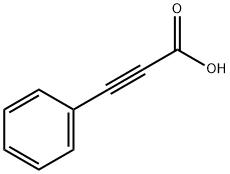
What is Phenylpropiolic acid?
Chemical properties
WHITE TO SLIGHTLY BEIGE FINE CRYSTALLINE POWDER
The Uses of Phenylpropiolic acid
Phenylpropiolic Acid is used as a reagent in the high yield synthesis of 3,3-diphenylpropanoic acid derivatives via hydrophenylation and ionic hydrogenation with strong Lewis acids. It is also used in the synthesis of highly substituted aromatic rings via the alkyne-mediated approach which serve as templates for drug design.
Definition
ChEBI: An acetylenic compound that is propynoic acid in which the acetylenic hydrogen is replaced by a phenyl group.
Purification Methods
Crystallise the acid from *benzene, CCl4 (m 136o) or aqueous EtOH. The S-benzylisothiuronium salt has m 184-186o (from EtOH). [Beilstein 9 II 436, 9 III 3061, 9 IV 2327.]
Properties of Phenylpropiolic acid
| Melting point: | 135-137 °C (lit.) |
| Boiling point: | 225.74°C (rough estimate) |
| Density | 1.1674 (rough estimate) |
| refractive index | 1.5550 (estimate) |
| storage temp. | 2-8°C |
| pka | pK1:2.269 (35°C) |
| form | Fine Crystalline Powder |
| color | White to slightly beige |
| Water Solubility | freely soluble |
| BRN | 742587 |
| CAS DataBase Reference | 637-44-5(CAS DataBase Reference) |
| NIST Chemistry Reference | Phenylpropiolic acid(637-44-5) |
| EPA Substance Registry System | 2-Propynoic acid, 3-phenyl- (637-44-5) |
Safety information for Phenylpropiolic acid
| Signal word | Warning |
| Pictogram(s) |
 Exclamation Mark Irritant GHS07 |
| GHS Hazard Statements |
H315:Skin corrosion/irritation H319:Serious eye damage/eye irritation H335:Specific target organ toxicity, single exposure;Respiratory tract irritation |
| Precautionary Statement Codes |
P261:Avoid breathing dust/fume/gas/mist/vapours/spray. P264:Wash hands thoroughly after handling. P264:Wash skin thouroughly after handling. P271:Use only outdoors or in a well-ventilated area. P280:Wear protective gloves/protective clothing/eye protection/face protection. P302+P352:IF ON SKIN: wash with plenty of soap and water. P305+P351+P338:IF IN EYES: Rinse cautiously with water for several minutes. Remove contact lenses, if present and easy to do. Continuerinsing. |
Computed Descriptors for Phenylpropiolic acid
| InChIKey | XNERWVPQCYSMLC-UHFFFAOYSA-N |
New Products
Indole Methyl Resin tert-butyl 9-methoxy-3-azaspiro[5.5]undecane-3-carboxylate Boc-His(Boc)-OH 2-CTC Resin 4-Chloro-7-tosy1-7Hpyrrolo[2,3-d]pyrimidine 5,7-Dibromo-1H-indole 2,5-dichloro-N-hydroxy-4,6-dimethylpyridine-3-carboximidamide 2,2-Dimethoxy-7-azaspiro[3.5]nonane hydrochloride 4-chloromethyl-5-methyl-1,3-dioxol-2-one (DMDO-Cl) R-2-BENZYLOXY PROPIONIC ACID 1,1’-CARBONYLDIIMIDAZOLE 1,1’-CARBONYLDI (1,2-4 TRIAZOLE) N-METHYL INDAZOLE-3-CARBOXYLIC ACID 4-((2-hydroxyethyl)thio)benzoic acid 1-(TERT-BUTOXYCARBONYL)-2-PYRROLIDINONE Methyl 6-methylnicotinate 3-Pyridineacrylic acid tert-Butyl carbazate TETRAHYDRO-2H-PYRAN-3-OL 2-((4-morpholinophenylamino) (methylthio) methylene) malononitrile 3-(4-morpholinophenylamino)-5-amino-1H-pyrazole-4-carbonitrile 2,4-dihydroxybenzaldehyde 1,3-Diethyl-1,3-Diphenylurea Methyl 2-methylquinoline-6-carboxylateRelated products of tetrahydrofuran

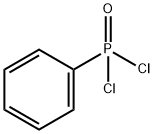
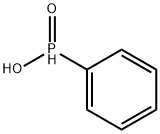
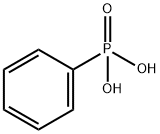



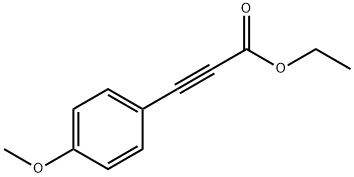
You may like
-
 637-44-5 3-phenylpropiolic acid 99%View Details
637-44-5 3-phenylpropiolic acid 99%View Details
637-44-5 -
 637-44-5 99%View Details
637-44-5 99%View Details
637-44-5 -
 3-phenylpropiolic acid 98%View Details
3-phenylpropiolic acid 98%View Details
637-44-5 -
 Phenylpropiolic Acid CAS 637-44-5View Details
Phenylpropiolic Acid CAS 637-44-5View Details
637-44-5 -
 Phenylpropiolic acid 97% CAS 637-44-5View Details
Phenylpropiolic acid 97% CAS 637-44-5View Details
637-44-5 -
 Phenylpropiolic acid CAS 637-44-5View Details
Phenylpropiolic acid CAS 637-44-5View Details
637-44-5 -
 Pyridine 99.5% HPLC /UV SpectroscopyView Details
Pyridine 99.5% HPLC /UV SpectroscopyView Details
110-86-1 -
 Thiourea 99% ARView Details
Thiourea 99% ARView Details
62-56-6
Statement: All products displayed on this website are only used for non medical purposes such as industrial applications or scientific research, and cannot be used for clinical diagnosis or treatment of humans or animals. They are not medicinal or edible.
